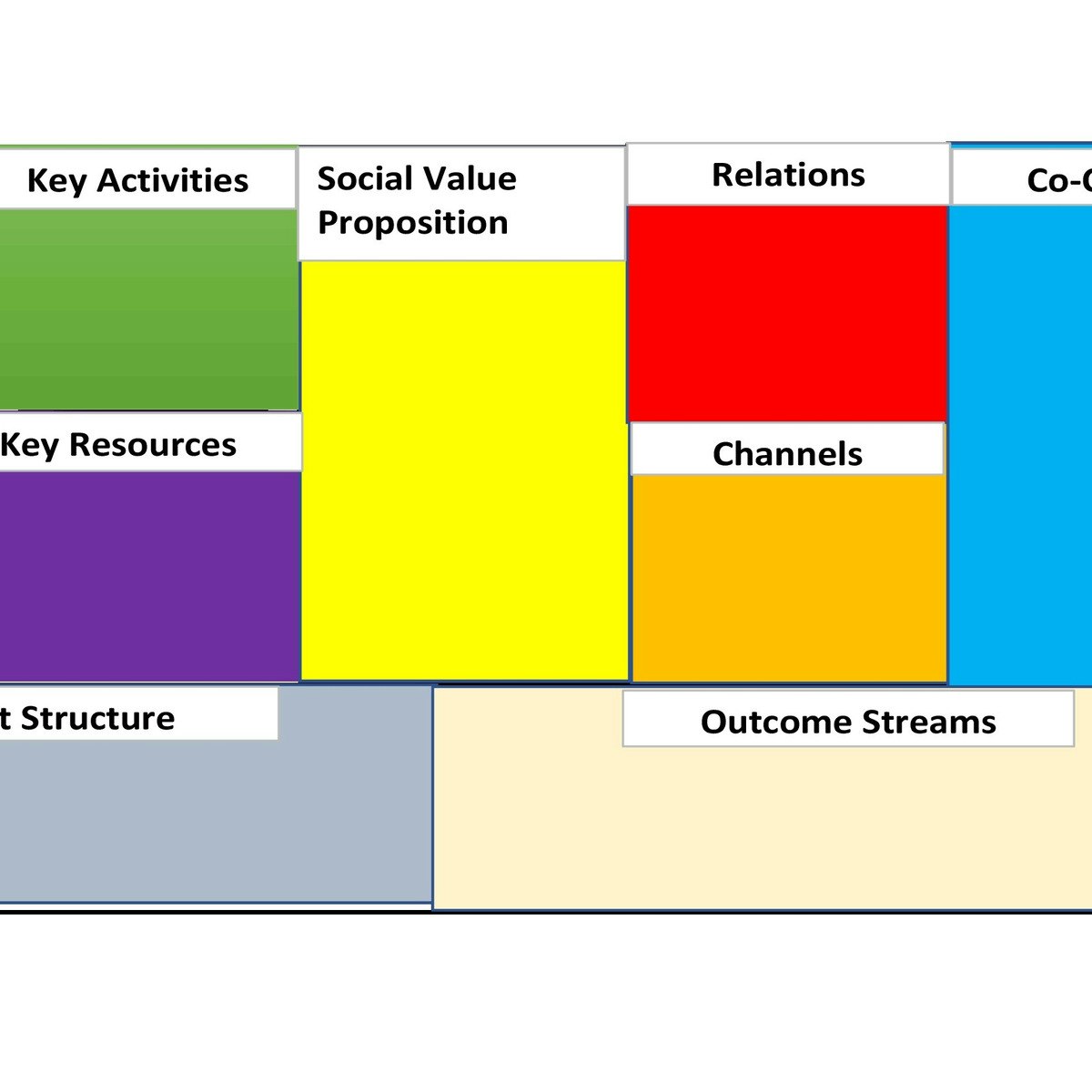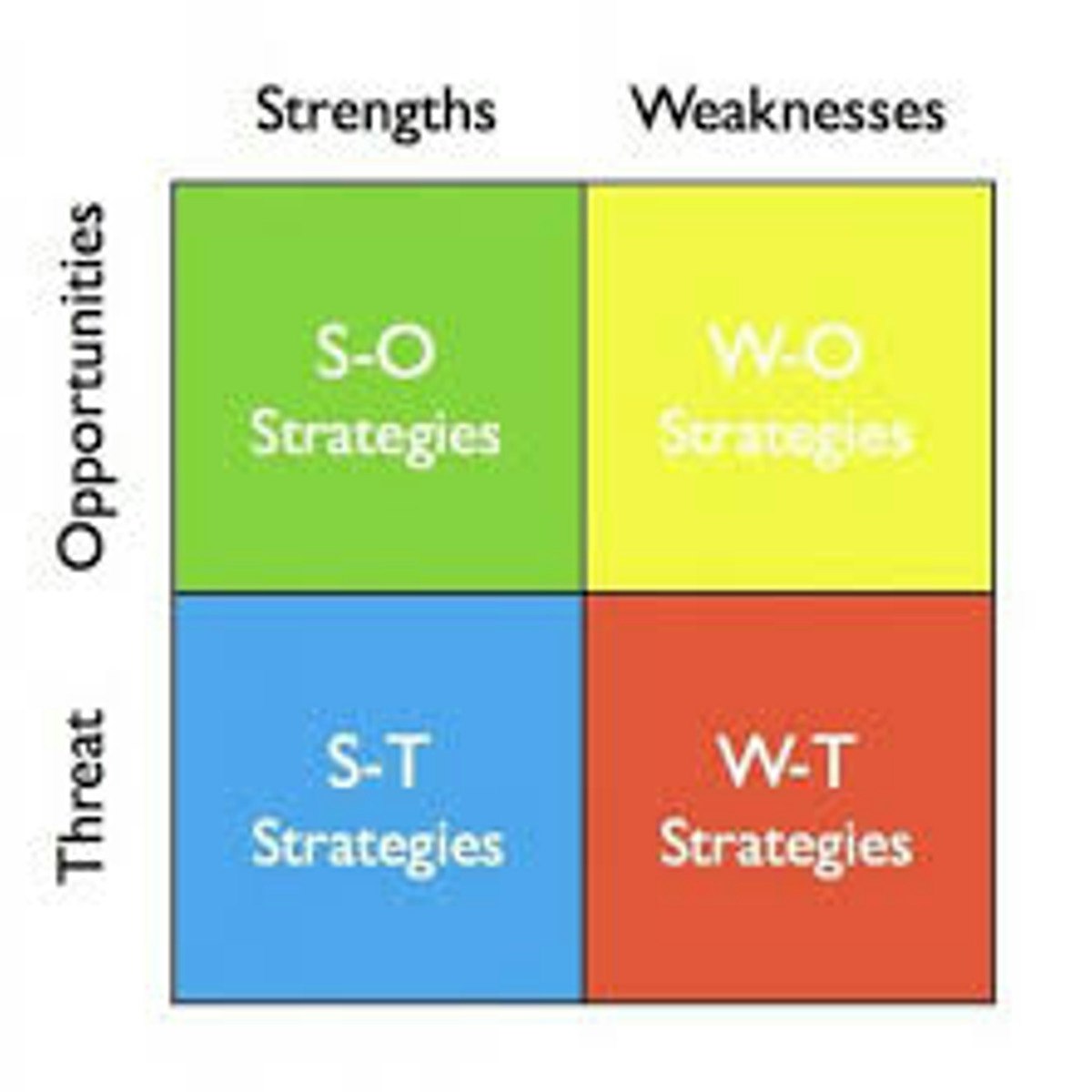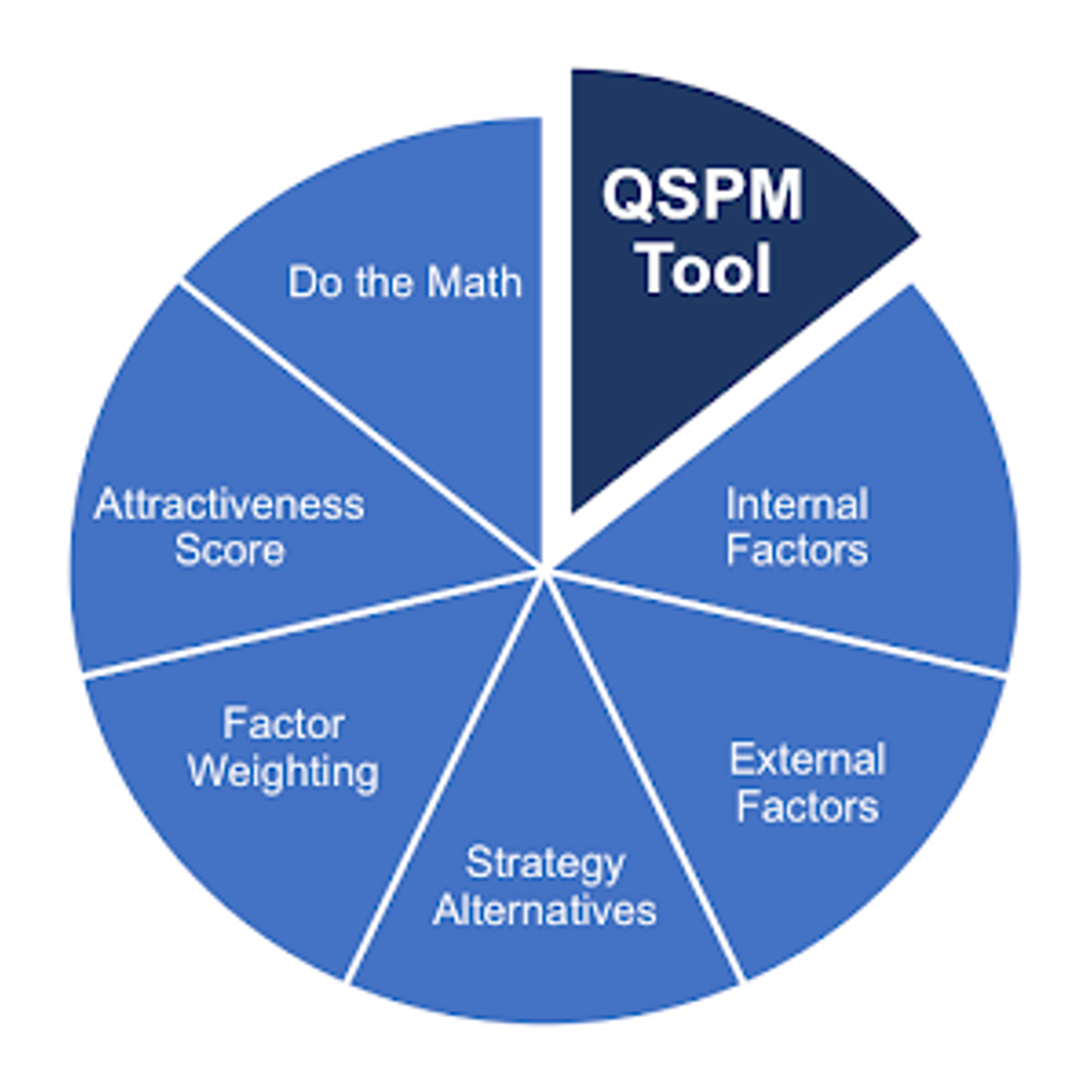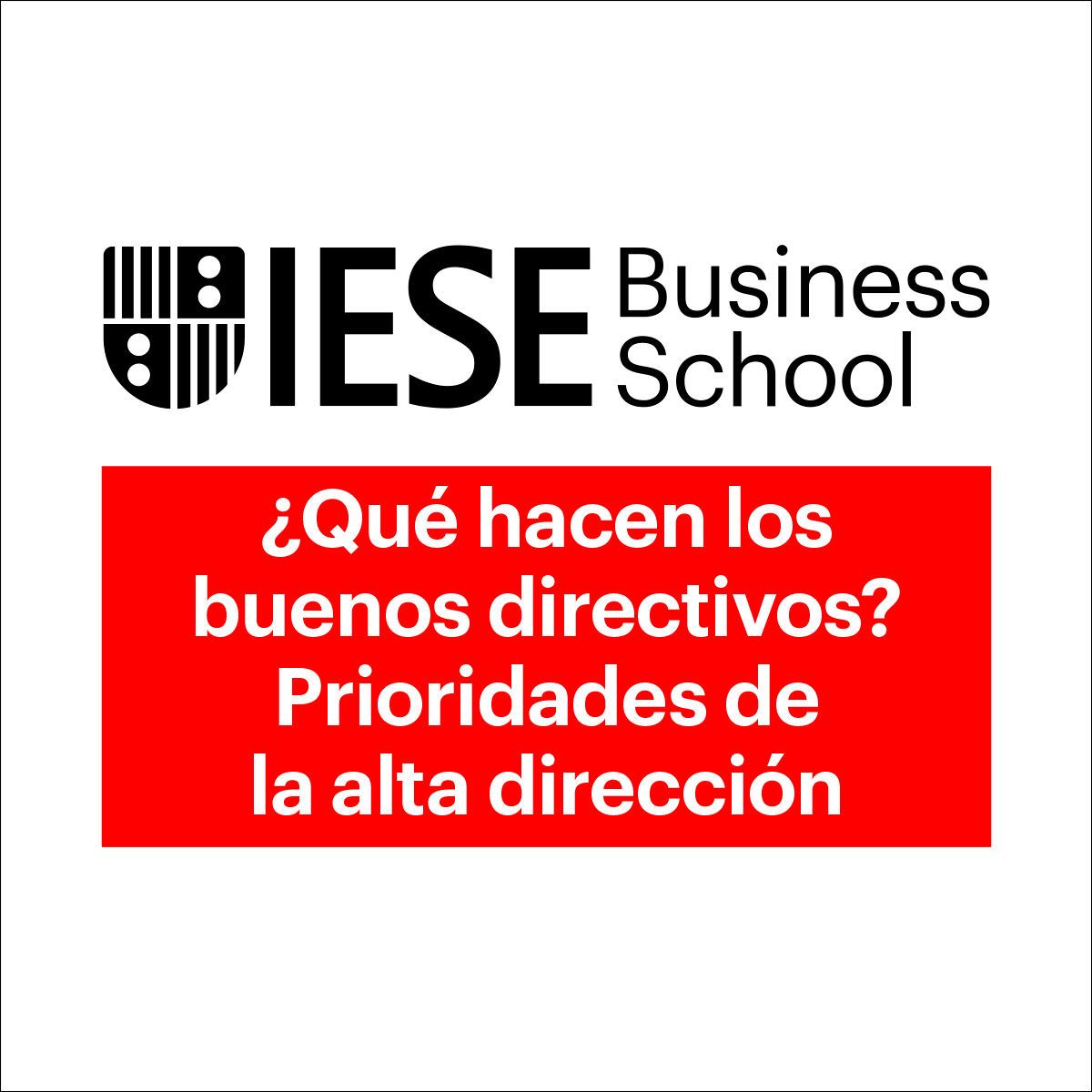Strategic Planning
Introduction to Strategic Planning
Strategic planning is the fundamental process organizations use to define their direction, make decisions on allocating resources, and pursue their long-term goals. It involves setting priorities, focusing energy and resources, strengthening operations, ensuring that employees and other stakeholders are working toward common goals, establishing agreement around intended outcomes/results, and assessing and adjusting the organization's direction in response to a changing environment. At its core, strategic planning provides a blueprint for growth and success, guiding an organization from where it is to where it wants to be.
Embarking on the journey of strategic planning can be intellectually stimulating. It involves dissecting complex business problems, understanding market dynamics, and forecasting future trends. The process often requires creativity in formulating unique strategies and analytical rigor in evaluating potential outcomes. For those who enjoy problem-solving and envisioning future possibilities, the world of strategic planning offers a rewarding landscape where insightful thinking can directly shape an organization's trajectory and success.
Introduction to Strategic Planning
What is Strategic Planning?
Strategic planning is more than just long-term planning; it's a disciplined effort to produce fundamental decisions and actions that shape and guide what an organization is, what it does, and why it does it. It requires broad-scale information gathering, an exploration of alternatives, and an emphasis on the future implications of present decisions. Think of it as creating a roadmap for a journey. Before starting, you need to know your destination (vision), your starting point (current situation), the route you'll take (strategy), and the resources you'll need (people, money, time).
The concept isn't new; its roots trace back to military strategy, where planning troop movements, resource allocation, and anticipating enemy actions were crucial for victory. Figures like Sun Tzu, author of "The Art of War," laid groundwork principles applicable even today. In the business world, strategic planning gained prominence in the mid-20th century as corporations grew larger and faced more complex, competitive markets. Pioneers like Peter Drucker emphasized setting objectives and analyzing results, helping formalize strategic planning as a distinct management discipline.
Over time, the practice evolved. Early models focused heavily on detailed, long-range forecasts. However, as the business environment became more volatile and unpredictable, strategic planning adapted, becoming more flexible, iterative, and focused on building adaptive capacity rather than rigid adherence to a fixed plan. Modern strategic planning integrates foresight, agility, and continuous learning.
These foundational courses can provide a solid overview of strategic thinking and planning principles.
For those interested in historical perspectives and foundational texts, consider this classic work on strategy.
Why Engage in Strategic Planning?
The primary objective of strategic planning is to achieve better alignment between an organization's capabilities and its external environment to attain its long-term goals. It helps organizations anticipate and respond to changes, allocate resources effectively, and create a shared understanding of priorities among stakeholders. A well-defined strategy ensures that daily decisions contribute to the overarching vision, preventing resources from being scattered across conflicting initiatives.
Strategic planning forces organizations to look beyond immediate operational concerns and consider the bigger picture. It encourages proactive thinking rather than reactive responses to market shifts or competitive pressures. By systematically analyzing strengths, weaknesses, opportunities, and threats, organizations can identify competitive advantages and areas needing improvement. This process fosters informed decision-making based on data and analysis, rather than intuition alone.
Ultimately, strategic planning aims to enhance organizational performance and ensure long-term sustainability. It provides clarity on direction, improves communication and coordination across departments, boosts employee engagement by connecting their work to larger goals, and establishes metrics for measuring progress and success. It is a vital tool for navigating uncertainty and achieving lasting impact.
Where is Strategic Planning Used?
Strategic planning is not confined to large corporations; its principles are applicable across a wide range of sectors and organizational sizes. Multinational corporations use it to navigate global markets, manage diverse product lines, and respond to complex regulatory environments. Small and medium-sized enterprises (SMEs) leverage it to identify niche markets, scale operations, and compete effectively against larger players.
Nonprofit organizations employ strategic planning to define their mission impact, secure funding, allocate limited resources efficiently, and demonstrate accountability to donors and beneficiaries. Government agencies use it for policy development, resource allocation for public services, long-term infrastructure planning, and achieving societal goals. Even educational institutions, from universities to K-12 schools, engage in strategic planning to enhance educational outcomes, manage budgets, and adapt to evolving pedagogical trends.
Essentially, any organization seeking to achieve specific long-term objectives in a dynamic environment can benefit from strategic planning. Its adaptability makes it a universal management tool, crucial for steering organizations toward desired future states, regardless of their industry or structure. Explore resources specific to sectors like public libraries or NGOs through dedicated learning opportunities.
This book offers a comprehensive guide specifically for public and nonprofit sectors.
Understanding Basic Strategic Language
Entering the world of strategic planning involves learning some key terminology. A Mission Statement defines the organization's fundamental purpose – what it does, who it serves, and what makes it unique. It describes the present state. In contrast, a Vision Statement paints a picture of the desired future state – what the organization aspires to become or achieve in the long term. It's aspirational and forward-looking.
Values are the core principles and beliefs that guide an organization's culture and decision-making. They dictate expected behaviors and shape interactions both internally and externally. Goals are broad, long-term aims that stem from the mission and vision. Objectives are specific, measurable, achievable, relevant, and time-bound (SMART) steps taken to reach those broader goals.
One of the most common tools is the SWOT analysis, which involves assessing an organization's internal Strengths and Weaknesses, along with external Opportunities and Threats. This framework helps identify strategic fit and potential areas for action. Understanding these basic terms provides a foundation for engaging in more complex strategic discussions and analyses.
Core Concepts in Strategic Planning
Scanning the Horizon: Environmental Analysis
Effective strategic planning begins with a deep understanding of the external environment in which an organization operates. Environmental scanning is the process of systematically monitoring and analyzing external factors – political, economic, social, technological, environmental, and legal (often summarized by the acronym PESTLE) – that could impact the organization. This involves gathering intelligence about market trends, competitor actions, regulatory changes, technological advancements, and shifts in customer preferences.
Complementing the broad environmental scan is competitive analysis. This involves identifying key competitors, assessing their strategies, strengths, weaknesses, market share, and potential future moves. Frameworks like Porter's Five Forces help analyze industry structure and competitive intensity by examining the threat of new entrants, the bargaining power of buyers and suppliers, the threat of substitute products, and the rivalry among existing competitors. Understanding the competitive landscape is crucial for identifying opportunities for differentiation and sustainable advantage.
The goal of this analysis is not just to collect data, but to synthesize it into actionable insights. What opportunities can be leveraged? What threats must be mitigated? How does the competitive landscape shape potential strategic choices? This outward-looking perspective ensures that strategies are grounded in reality and responsive to the dynamic external world.
These courses delve into analysis techniques and competitive strategy.
Understanding competitive dynamics is a central theme in strategic management literature.
Setting the Course: Goals and Objectives
Once the external and internal environments are understood (often via SWOT analysis), the next step is translating the organization's mission and vision into concrete goals and objectives. Goals provide broad direction, while objectives offer specific milestones. Effective objectives are typically formulated using the SMART criteria: Specific, Measurable, Achievable, Relevant, and Time-bound. This ensures clarity, accountability, and trackability.
Another popular framework, particularly in tech-oriented and agile environments, is Objectives and Key Results (OKRs). OKRs link ambitious Objectives (what needs to be achieved) with specific Key Results (how progress towards the objective will be measured). OKRs are often set quarterly and emphasize alignment, transparency, and stretching capabilities. They foster a results-oriented culture focused on measurable impact.
Regardless of the framework used, the goal-setting process should be collaborative, involving relevant stakeholders to ensure buy-in and alignment. Clear goals and objectives provide focus, motivate action, guide resource allocation, and serve as benchmarks against which performance can be evaluated. They transform broad aspirations into a tangible plan of action.
Learn more about setting effective goals and using frameworks like SMART and OKR.
Allocating Wisely: Resources and Priorities
Strategy is fundamentally about making choices – deciding what to do and, just as importantly, what not to do. Resource allocation is where these choices become concrete. Organizations have finite resources – financial capital, human talent, time, technology – and strategic planning provides a framework for deploying these resources towards the highest-priority initiatives that align with the overall goals.
Prioritization involves evaluating potential projects, investments, or activities based on their strategic importance, potential return, risk level, and resource requirements. Techniques like cost-benefit analysis, risk assessment, and strategic alignment matrices can help decision-makers compare different options objectively. Effective prioritization ensures that limited resources are concentrated on activities that create the most value and contribute most significantly to achieving strategic objectives.
This process often involves difficult trade-offs. Pursuing one opportunity might mean foregoing another. Strategic planning facilitates these tough decisions by providing a clear rationale linked back to the overarching strategy. It helps avoid the trap of spreading resources too thinly across too many initiatives, leading to mediocre results everywhere. Focused allocation maximizes the impact of available resources.
These courses touch upon resource allocation and strategic decision-making.
Measuring Progress: Performance and Evaluation
A strategic plan is incomplete without mechanisms to track progress and measure performance. How will the organization know if its strategy is working? Performance measurement involves defining key metrics that reflect progress towards strategic objectives and establishing systems to collect and analyze relevant data.
Key Performance Indicators (KPIs) are quantifiable measures used to evaluate the success of an organization or a specific activity. Effective KPIs are directly linked to strategic objectives, provide timely insights, and are easy to understand and communicate. They can cover various aspects, including financial performance, customer satisfaction, operational efficiency, and employee engagement.
The Balanced Scorecard is a popular strategic performance management framework that goes beyond traditional financial metrics. It considers performance from four perspectives: Financial, Customer, Internal Business Processes, and Learning & Growth. This provides a more holistic view of organizational health and ensures that short-term financial gains are not pursued at the expense of long-term capabilities or customer relationships. Regular performance reviews, using tools like KPIs and the Balanced Scorecard, allow organizations to assess progress, identify deviations from the plan, and make necessary adjustments to stay on course.
Understanding performance measurement is crucial for effective strategy execution.
The Strategic Planning Process
Mapping the Journey: Phases of Planning
The strategic planning process is typically iterative and can be broken down into distinct, though often overlapping, phases. The first phase is Strategy Formulation. This involves conducting the analyses discussed earlier (SWOT, PESTLE, competitive analysis), defining or reaffirming the mission, vision, and values, setting strategic goals and objectives, and generating potential strategic options. It's the "thinking" part of the process, focused on deciding the direction.
The second phase is Strategy Implementation. This is where the chosen strategy is translated into action. It involves developing detailed action plans, allocating resources, defining roles and responsibilities, establishing timelines, and communicating the plan throughout the organization. Implementation often requires changes to organizational structure, processes, systems, and culture. This is the "doing" part, and often the most challenging phase, requiring strong leadership and effective change management.
The final phase is Strategy Evaluation and Control. This involves continuously monitoring progress towards objectives using defined performance metrics (like KPIs), evaluating the effectiveness of the strategy, and making necessary adjustments. The environment changes, assumptions may prove incorrect, and implementation might face unexpected hurdles. Therefore, evaluation is not just an end step but an ongoing process that feeds back into formulation and implementation, ensuring the strategy remains relevant and effective over time. This cyclical nature makes strategic planning a dynamic management tool.
These courses provide insights into the overall process, from formulation to execution.
Engaging the Crew: Stakeholder Management
Strategic planning doesn't happen in a vacuum. It involves and affects various stakeholders – individuals or groups who have an interest in the organization's activities and outcomes. Key stakeholders can include employees, customers, shareholders, suppliers, government regulators, communities, and partners. Identifying these stakeholders early in the process is crucial.
Effective stakeholder management involves understanding their needs, expectations, potential influence, and level of interest in the strategy. Different stakeholders may have conflicting priorities, requiring careful communication and negotiation. Engaging key stakeholders throughout the planning process – from gathering input during formulation to communicating progress during implementation – can significantly increase buy-in, reduce resistance, and improve the overall quality and feasibility of the strategy.
Ignoring or poorly managing stakeholders can lead to significant roadblocks. Disengaged employees might resist changes, dissatisfied customers might leave, and concerned community groups might create public opposition. Proactive stakeholder identification, analysis, and engagement are therefore essential components of successful strategic planning and implementation. Communication and transparency are key to building trust and fostering collaborative relationships.
Navigating Storms: Risk Assessment and Contingency Planning
Every strategy involves assumptions about the future, and the future is inherently uncertain. Risk assessment is the process of identifying potential internal and external risks that could negatively impact the achievement of strategic objectives. These risks could range from economic downturns and competitor actions to operational failures and regulatory changes.
Once risks are identified, they need to be analyzed based on their likelihood of occurrence and potential impact. This helps prioritize which risks require the most attention. For significant risks, organizations develop contingency plans – alternative courses of action to be implemented if specific risk events materialize. This proactive planning helps organizations respond more quickly and effectively when disruptions occur, minimizing negative consequences.
Contingency planning isn't about predicting the future perfectly, but about building resilience and adaptability. It forces organizations to think about "what if" scenarios and prepare potential responses in advance. Integrating risk assessment and contingency planning into the strategic planning process makes the resulting strategy more robust and increases the organization's ability to navigate unexpected challenges.
Understanding risk is crucial in strategic management.
Learning from Experience: Case Studies
Analyzing real-world examples provides invaluable insights into how strategic planning works in practice. Case studies of organizations that have successfully formulated and implemented strategies offer lessons on effective practices, common pitfalls, and the complexities involved. Examining how companies like Apple pivoted under Steve Jobs or how Netflix disrupted the entertainment industry reveals the power of visionary leadership and bold strategic moves.
Conversely, studying strategic failures – like Kodak's struggle with digital photography or Blockbuster's inability to adapt to streaming – highlights the dangers of complacency, flawed assumptions, or poor execution. These stories underscore the importance of environmental scanning, adaptability, and willingness to challenge existing business models.
By dissecting these cases, learners can understand the application of strategic concepts and frameworks in diverse contexts. They can see how different tools were used, how stakeholders were managed, how risks were addressed, and what factors contributed to success or failure. Case study analysis is a powerful pedagogical tool for developing strategic thinking and decision-making skills. Many business programs and online courses utilize case studies extensively.
While specific case study courses aren't listed, many strategic management courses incorporate them.
Tools and Techniques
Exploring Possibilities: Scenario Planning
In an increasingly uncertain world, planning for a single "most likely" future is often insufficient. Scenario planning is a technique used to explore multiple plausible future environments and develop strategies that are robust across different possibilities. Instead of predicting one outcome, it involves creating several distinct, internally consistent narratives about how the future might unfold based on key driving forces and uncertainties.
For each scenario, organizations analyze potential impacts and consider strategic responses. This helps identify strategies that perform well across a range of futures ("robust strategies") or highlight the need for flexibility and contingency plans. Scenario planning encourages broader thinking, challenges assumptions, and prepares organizations to adapt more effectively to unexpected developments.
A related technique, sometimes used in competitive analysis, is war gaming. This involves simulating competitive interactions, where teams representing different market players (including the own organization and key competitors) make strategic moves and countermoves within a defined market context. War gaming helps anticipate competitive responses to strategic initiatives and identify potential vulnerabilities or opportunities.
These tools help organizations prepare for uncertainty.
Analytical Frameworks: PESTLE and Porter's Five Forces
Strategic analysis relies on structured frameworks to organize thinking and ensure comprehensive assessment. As mentioned earlier, PESTLE analysis (Political, Economic, Social, Technological, Legal, Environmental) provides a systematic way to scan the macro-environment. It prompts strategists to consider a wide range of external factors that could shape the industry landscape and create opportunities or threats.
Porter's Five Forces framework focuses specifically on the industry environment and the forces that determine competitive intensity and profitability. By analyzing the power of suppliers and buyers, the threat of new entrants and substitutes, and the intensity of rivalry among existing firms, organizations can understand the attractiveness of an industry and identify strategic positions that might offer better protection from competitive pressures.
These frameworks, along with others like SWOT analysis or Value Chain analysis, provide structured ways to dissect complex situations. They don't provide definitive answers, but they ensure key factors are considered, facilitate comparison across different elements, and help structure the strategic conversation. Mastery of these analytical tools is a core competency for strategic planners and analysts.
Many strategic management courses cover these essential frameworks.
This classic book introduces Porter's frameworks.
Communicating Strategy: Data Visualization
A brilliant strategy is ineffective if it cannot be communicated clearly and compellingly to stakeholders. Data visualization plays a critical role in translating complex analyses and strategic plans into easily understandable formats. Charts, graphs, dashboards, and infographics can help illustrate market trends, performance metrics, resource allocations, and strategic roadmaps.
Effective visualization makes data more accessible and engaging, facilitating better understanding and decision-making. It can highlight key insights from environmental scans, showcase progress towards KPIs, and clearly articulate the different components of the strategic plan. Tools ranging from basic spreadsheet software like Microsoft Excel to specialized business intelligence platforms enable strategists to create impactful visual representations of their work.
Communicating the "why" behind the strategy is just as important as communicating the "what." Visual tools can help tell the strategic story, connecting the dots between the analysis, the chosen path, and the expected outcomes. This aids in building alignment and securing commitment from those responsible for implementing the plan.
Supporting the Process: Software Platforms
While strategic thinking remains a human endeavor, various software platforms can support and streamline the strategic planning process. These tools can assist with data collection and analysis, collaboration among planning teams, project management for implementation, and performance tracking through dashboards.
Some platforms offer dedicated modules for SWOT analysis, Balanced Scorecard implementation, or OKR tracking. Others focus on project portfolio management, helping organizations align projects with strategic goals and manage resource allocation. Collaboration features enable teams, potentially geographically dispersed, to work together on developing and refining the plan.
These software solutions can enhance efficiency, improve data accessibility, facilitate communication, and provide real-time visibility into performance. However, they are tools, not replacements for critical thinking and leadership. The effectiveness of any strategic planning software depends on the quality of the strategic thinking informing its use and the organization's commitment to the overall process.
Formal Education Pathways
Undergraduate Foundations
For those considering a career involving strategic planning, a solid undergraduate education provides a crucial foundation. Majors in Business Administration or Management are common starting points, offering coursework in foundational areas like finance, marketing, operations, and organizational behavior – all relevant to strategic decision-making. Economics majors develop strong analytical skills and understanding of market dynamics.
Other relevant fields include finance, which provides expertise in resource allocation and investment appraisal, and marketing, which focuses on understanding customers and competitive positioning. Increasingly, degrees in data science or analytics are valuable, given the growing importance of data-driven strategy. Engineering or science backgrounds, combined with business knowledge, can be advantageous in technology-driven industries.
Regardless of the specific major, developing strong critical thinking, problem-solving, communication, and analytical skills during undergraduate studies is paramount. Coursework involving case studies, team projects, and presentations helps build practical competencies applicable to strategic roles.
These courses cover foundational business and management principles.
Graduate Studies and Specializations
For deeper expertise and access to more senior strategic roles, many professionals pursue graduate education. The Master of Business Administration (MBA) is a popular choice, often offering specializations or concentrations in Strategy or Strategic Management. MBA programs typically provide a holistic view of business operations and emphasize strategic thinking through rigorous coursework, case studies, and interaction with experienced peers and faculty.
Other relevant Master's degrees include those in Management, Finance, Economics, or specialized programs like a Master's in Innovation and Entrepreneurship or Technology Management. These programs offer advanced knowledge in specific domains relevant to strategic planning. For those interested in research or academic careers in strategy, pursuing a Ph.D. in Business Administration with a focus on Strategy or a related field is the standard path.
Graduate programs not only deepen subject matter expertise but also hone advanced analytical, leadership, and communication skills. The network built during graduate studies can also be invaluable for career progression in the strategic planning field.
Consider these courses for insights into MBA-level concepts and strategic leadership.
Academic Research Opportunities
The field of strategic management is an active area of academic research. Universities and business schools house faculty who study various aspects of strategy, including competitive dynamics, innovation, corporate governance, international strategy, and organizational adaptation. Research often involves developing new theories, testing existing frameworks with empirical data, and analyzing complex case studies.
Students pursuing graduate degrees, particularly at the Ph.D. level, often engage directly in research alongside faculty mentors. This involves literature reviews, data collection and analysis, and writing scholarly papers for publication in academic journals and presentation at conferences. Research opportunities allow for deep exploration of specific strategic topics and contribute to the broader understanding of how organizations achieve sustainable success.
Even for those not pursuing an academic career, staying abreast of current research findings can provide valuable insights for practitioners. Academic research often identifies emerging trends and challenges conventional wisdom, offering fresh perspectives on strategic planning and execution. Publications like the Harvard Business Review or the MIT Sloan Management Review often bridge the gap between academic research and practical application.
Professional Certifications
While formal degrees are common, professional certifications can also enhance credibility and demonstrate specialized knowledge in areas related to strategic planning. Although there isn't one single dominant certification for "Strategic Planner," several certifications cover relevant competencies.
Certifications in Project Management, such as the Project Management Professional (PMP) from the Project Management Institute (PMI), are highly relevant as strategy implementation often involves managing complex projects. Certifications in Change Management demonstrate expertise in navigating the organizational shifts required for strategy execution. For those in specific functions, certifications like the SHRM-CP or SHRM-SCP (from the Society for Human Resource Management) for HR professionals or certifications in financial analysis (like the CFA) can be valuable, as strategic planning integrates across functions.
Some organizations offer specialized certifications or credentials related to strategic planning or management, though their recognition may vary. These certifications typically require demonstrating knowledge through exams and sometimes documenting relevant work experience. They can be a valuable way to signal expertise, particularly for those transitioning into strategic roles or seeking advancement.
Self-Directed Learning Options
Learning Through Analysis: Case Studies
Beyond formal education, analyzing business case studies is an excellent way to develop strategic thinking skills independently. Numerous resources publish detailed case studies covering strategic challenges faced by real companies across various industries. Reading and dissecting these cases – identifying the core problem, analyzing the company's situation (using frameworks like SWOT or Five Forces), evaluating the options considered, and assessing the outcomes of the chosen strategy – provides practical insights.
Try to put yourself in the shoes of the decision-makers. What would you have done differently? What assumptions were made? What were the key success factors or reasons for failure? Discussing cases with peers or mentors can further deepen understanding by exposing different perspectives and analytical approaches. This method allows learners to grapple with realistic complexity without the real-world consequences.
Many online courses, including some available through platforms searchable on OpenCourser, heavily utilize the case method. Engaging with these structured analyses can provide guidance and feedback as you develop your analytical abilities. Consistent practice with case studies builds pattern recognition and sharpens strategic intuition.
Practice Through Play: Simulations and Games
Business simulations and strategy games offer interactive ways to practice strategic decision-making. These tools place learners in dynamic environments where they manage virtual companies, make decisions about product development, marketing, finance, and operations, and compete against other players or AI opponents. The simulation responds to decisions, providing immediate feedback on performance.
Simulations allow experimentation with different strategies in a risk-free setting. Learners can see the consequences of their choices, understand the interplay between different functional areas, and experience the challenges of adapting to changing market conditions and competitor actions. They provide a hands-on experience that complements theoretical knowledge.
While often used in academic programs or corporate training, some simulations or strategy-focused games are accessible to individual learners. Engaging with these tools can be a fun and effective way to hone strategic thinking, decision-making under pressure, and understanding of complex business dynamics.
Building a Portfolio: Hypothetical Projects
For those seeking to demonstrate strategic planning skills, particularly career changers lacking direct experience, developing hypothetical strategic plans can be a valuable exercise. Choose an organization you are familiar with (or one you can research thoroughly) – perhaps a local nonprofit, a small business, or even a division within your current company.
Apply the strategic planning process: conduct an external analysis (PESTLE, competitors), an internal analysis (SWOT), define potential strategic goals, formulate a few strategic options, recommend a course of action, and outline key implementation steps and performance metrics. Document your analysis and recommendations professionally, as if preparing a report for leadership.
This project not only deepens your understanding by forcing application but also creates a tangible work sample you can potentially share (appropriately anonymized if necessary) with prospective employers or clients. It demonstrates initiative, analytical ability, and understanding of strategic frameworks. Consider using online tools for analysis and presentation, further showcasing relevant skills.
These project-based courses guide you through creating strategic artifacts.
Real-World Application
Ultimately, the best way to learn strategic planning is by doing it. Look for opportunities to apply strategic thinking in your current role, even if it's not explicitly a strategy position. Can you analyze your team's or department's challenges and opportunities from a strategic perspective? Can you volunteer to assist with planning initiatives?
Offer to research market trends relevant to your team's work. Propose improvements to processes based on an analysis of strengths and weaknesses. Frame suggestions in terms of how they align with broader organizational goals. Even small-scale applications help build experience and demonstrate strategic aptitude.
For those outside traditional organizations, consider applying strategic planning principles to personal projects, volunteer work, or community initiatives. Defining goals, assessing resources and constraints, analyzing the environment, and planning action steps are transferable skills. Integrating learning with real-world challenges, however small, solidifies understanding and builds confidence.
This classic book emphasizes personal effectiveness, a foundation for strategic thinking.
Career Progression in Strategic Roles
Starting the Journey: Entry-Level Roles
Entry-level positions in strategy often involve supporting senior strategists or teams with research, data analysis, and presentation preparation. Titles might include Strategy Analyst, Business Analyst, Market Analyst, or Junior Consultant. These roles provide exposure to strategic frameworks, analytical tools, and the planning process.
Typical responsibilities include gathering market intelligence, analyzing competitor activities, crunching financial data, modeling scenarios, preparing reports, and assisting with workshop facilitation. Strong analytical skills, proficiency with tools like Excel and PowerPoint, good communication abilities, and intellectual curiosity are essential. These roles offer a steep learning curve and a chance to understand how strategy connects to different parts of the business.
Landing these roles often requires a relevant bachelor's degree (Business, Economics, Finance, sometimes Engineering or Data Science) and potentially internships demonstrating analytical capabilities. For those pivoting careers, highlighting transferable analytical, problem-solving, and project management skills is key. Building a portfolio through projects or relevant online coursework can strengthen an application.
These courses can help build foundational analytical and business skills.
Moving Up: Mid-Career and Management
With experience, professionals can move into roles with greater responsibility for shaping and driving strategy. Titles might include Strategy Manager, Senior Strategy Analyst, Corporate Development Manager, or Internal Consultant. These roles often involve leading specific strategic initiatives, managing planning cycles for a business unit, or conducting complex analyses for mergers, acquisitions, or market entry.
At this level, leadership, communication, and influence skills become increasingly important. Mid-career professionals need to collaborate effectively across departments, present recommendations convincingly to senior leadership, and manage teams or projects related to strategy implementation. An MBA or other relevant Master's degree can often facilitate this transition, though strong performance and demonstrated strategic thinking are paramount.
Individuals might specialize in specific areas like competitive intelligence, market analysis, innovation strategy, or digital transformation strategy. The ability to not only analyze but also synthesize information, formulate compelling strategic options, and drive execution distinguishes successful mid-career strategy professionals.
Reaching the Top: Executive Leadership
Strategic thinking is a hallmark of effective executive leadership. At the highest levels – C-suite roles like Chief Executive Officer (CEO), Chief Strategy Officer (CSO), Chief Financial Officer (CFO), or heads of major business units – responsibility shifts from executing specific analyses to setting the overall strategic direction for the organization.
Executives are responsible for defining the long-term vision, making major resource allocation decisions, navigating complex stakeholder relationships, shaping organizational culture, and ensuring the organization adapts to long-term trends and disruptions. While they rely on strategy teams for detailed analysis, their role involves judgment, foresight, and the ability to inspire and align the entire organization around the chosen path.
The path to executive leadership often involves deep industry experience, a track record of successful leadership in operational or functional roles, and demonstrated strategic acumen. While a dedicated CSO role exists in some companies, strategic responsibility is often integrated into other top executive functions. Strong leadership capabilities, financial literacy, and a deep understanding of the business and its environment are crucial.
Alternative Paths: Consulting and Freelance
Beyond working within a single organization, strategic planning skills are highly valued in management consulting. Consulting firms hire individuals with strong analytical and problem-solving abilities to advise clients across various industries on their strategic challenges. Consultants work on diverse projects, gaining broad exposure but often facing demanding workloads and travel schedules.
The career path in consulting typically progresses from Analyst to Consultant, Manager, Principal, and eventually Partner. It offers rapid learning and development opportunities. Many individuals spend several years in consulting to build expertise before transitioning into industry roles, often at a senior level.
With significant experience, some strategy professionals choose to work as independent consultants or freelancers. This offers greater flexibility and autonomy but requires strong networking and business development skills to secure projects. Freelance strategists might specialize in specific industries or types of strategic challenges, offering expert advice on a project basis.
These courses are relevant for those interested in consulting.
This book provides insights into the consulting world.
Challenges in Modern Strategic Planning
Keeping Pace: Technological Disruption
The rapid pace of technological change presents a significant challenge for strategic planning. Technologies like artificial intelligence, blockchain, IoT, and automation are reshaping industries, creating new business models, and rendering old ones obsolete. Planners must constantly scan the technological horizon, understand the potential impact of emerging technologies, and assess how their organization can adapt or leverage them.
This requires not only technological literacy but also the agility to adjust strategies quickly. Traditional planning cycles measured in years may be too slow. Organizations need processes that allow for faster iteration, experimentation, and pivoting in response to tech-driven shifts. Integrating technology foresight into the planning process and building organizational capabilities for digital transformation are critical.
The challenge lies in distinguishing hype from genuine disruption and making strategic bets on technologies with uncertain long-term trajectories. Failure to adapt can lead to competitive disadvantage, as seen in numerous industries disrupted by digital newcomers.
This book explores the challenges of established companies facing disruptive innovation.
Global vs. Local: Balancing Act
For organizations operating across borders, strategic planning involves navigating the tension between globalization and localization. Global integration can offer economies of scale, standardized processes, and consistent branding. However, markets differ significantly in terms of customer preferences, regulatory environments, competitive landscapes, and cultural norms.
A purely global strategy might fail to resonate with local customers or comply with local regulations. Conversely, excessive localization can lead to inefficiencies, brand fragmentation, and loss of scale benefits. Strategic planners must determine the optimal balance – which aspects of the strategy should be standardized globally, and which should be adapted to local conditions?
This requires deep understanding of both global trends and local market nuances. It involves designing organizational structures and processes that allow for both global coordination and local responsiveness. Geopolitical instability and shifting trade dynamics further complicate this balancing act, requiring ongoing monitoring and strategic adjustments.
Doing Right: Ethical Considerations
Strategic decisions often have significant ethical implications. Choices about resource allocation, market entry or exit, product development, supply chain management, and workforce adjustments can affect employees, customers, communities, and the environment. Strategic planning must incorporate ethical considerations alongside economic and competitive factors.
Questions arise regarding fairness in resource distribution, responsibility towards stakeholders impacted by strategic shifts (e.g., layoffs due to automation), environmental sustainability of operations, and ethical marketing practices. Ignoring these dimensions can lead to reputational damage, legal issues, loss of customer trust, and decreased employee morale.
Integrating ethical frameworks into the planning process, conducting ethical impact assessments of strategic options, and fostering an organizational culture that values integrity are crucial. Strategic leaders must consider not only what is profitable or competitively advantageous, but also what is right and responsible.
Measuring the Horizon: Long-Term vs. Short-Term
A persistent challenge in strategic planning is balancing long-term goals with short-term pressures and performance expectations. Strategic initiatives often require significant upfront investment and may take years to yield tangible results. However, organizations, particularly publicly traded companies, face pressure to deliver consistent quarterly earnings and meet short-term market expectations.
This can create a bias towards prioritizing initiatives with quick payoffs over potentially more impactful long-term strategic investments. Measuring the progress of long-term strategies can also be difficult, as leading indicators may be less obvious than immediate financial results. Strategic planners need to develop metrics that capture progress towards long-term goals and effectively communicate the rationale for long-term investments to stakeholders.
Frameworks like the Balanced Scorecard attempt to address this by incorporating non-financial and leading indicators related to customers, processes, and learning. However, maintaining focus on the strategic horizon amidst immediate demands requires strong leadership commitment and a clear articulation of how short-term actions contribute to the long-term vision.
Current Trends and Future Outlook
Smarter Strategy: AI and Predictive Analytics
Artificial intelligence (AI) and predictive analytics are increasingly influencing strategic planning. AI algorithms can analyze vast amounts of data to identify patterns, forecast trends, and model complex scenarios with greater speed and sophistication than traditional methods. This can enhance environmental scanning, competitive intelligence, and risk assessment.
Predictive analytics can help forecast market demand, customer behavior, or potential supply chain disruptions, enabling more proactive and data-driven strategic decisions. AI can also assist in optimizing resource allocation and simulating the potential impact of different strategic options. However, reliance on AI also raises questions about data bias, algorithmic transparency, and the need for human judgment to interpret AI-generated insights and consider qualitative factors.
The future likely involves a hybrid approach, where AI augments human strategic thinking, automating routine analyses and providing powerful insights, while humans focus on creativity, ethical considerations, and complex judgment calls. Professionals in strategy will need to develop data literacy and understand how to effectively leverage these powerful analytical tools.
Purpose and Planet: Sustainability Integration
There is a growing trend towards integrating sustainability – encompassing environmental, social, and governance (ESG) factors – directly into core business strategy, rather than treating it as a separate corporate social responsibility (CSR) initiative. Stakeholders, including investors, customers, and employees, increasingly expect organizations to address issues like climate change, resource scarcity, social inequality, and ethical governance.
Strategic planning frameworks are evolving to incorporate ESG considerations explicitly. This involves assessing environmental and social risks and opportunities, setting sustainability-related goals and KPIs, and aligning business models with sustainable practices. Companies are exploring circular economy principles, investing in renewable energy, promoting diversity and inclusion, and ensuring ethical supply chains as part of their long-term strategy.
This integration is driven not only by ethical concerns but also by recognition that sustainable practices can enhance brand reputation, attract talent, mitigate risks, create new market opportunities, and ultimately contribute to long-term financial performance. Strategic planning is becoming a key tool for navigating the transition towards a more sustainable economy.
You can explore sustainability topics further on OpenCourser's Sustainability browse page.
Agile and Adaptive: Decentralized Decision-Making
In response to rapidly changing environments, some organizations are moving away from highly centralized, top-down strategic planning processes towards more decentralized and agile models. Empowering teams closer to the customer or the operational front lines to make strategic decisions within defined boundaries can enable faster responses and more adaptive strategies.
Agile methodologies, originally developed for software development, are being adapted for strategic planning. This involves shorter planning cycles, iterative development and testing of strategic initiatives, cross-functional teams, and continuous feedback loops. Frameworks like OKRs facilitate alignment while allowing for flexibility in execution.
This shift requires a change in leadership style, emphasizing empowerment, trust, and clear communication of strategic intent rather than detailed command-and-control. While decentralization can enhance agility, it also requires robust mechanisms for coordination, alignment, and ensuring that local decisions contribute to overall organizational goals. Finding the right balance between centralized direction and decentralized execution is a key challenge.
This book popularized lean and agile principles in startups.
The World Stage: Geopolitical Impacts
Geopolitical shifts, including changes in international trade relations, political instability, nationalism, and global power dynamics, have significant implications for strategic planning, particularly for multinational organizations. Supply chains can be disrupted, market access can change, regulatory landscapes can shift unexpectedly, and political risks can increase.
Strategic planners must actively monitor the geopolitical environment and incorporate geopolitical risk analysis into their assessments. This involves understanding potential impacts on operations, supply chains, market demand, and investment decisions. Strategies may need to become more resilient, perhaps involving diversification of supply chains, hedging against currency fluctuations, or adapting market entry strategies based on political stability.
The interplay between global business and geopolitics is becoming increasingly complex. Organizations need sophisticated intelligence gathering and scenario planning capabilities to navigate this uncertainty and develop strategies that account for potential geopolitical disruptions. Understanding international relations and political economy is becoming an important competency for strategic leaders.
Explore related topics on the International Studies browse page.
Frequently Asked Questions (Career Focus)
What industries value strategic planning skills most?
Strategic planning skills are valuable across nearly all industries, as most organizations benefit from defining direction and allocating resources effectively. However, some sectors place a particularly high premium on these skills. Management consulting is built around strategic advisory work. Technology companies operate in rapidly changing markets requiring constant strategic adaptation and foresight.
Financial services firms rely on strategic planning for navigating complex regulations, managing risk, and identifying investment opportunities. Healthcare organizations use it to manage costs, improve patient outcomes, and adapt to policy changes. Large manufacturing and consumer goods companies need sophisticated planning to manage global supply chains, diverse product portfolios, and competitive pressures.
Nonprofits and government agencies also increasingly seek individuals with strategic planning expertise to maximize impact and manage resources efficiently. Essentially, any complex organization operating in a dynamic environment needs strategic thinkers.
How transferable are strategic planning skills across sectors?
The core skills of strategic planning – analytical thinking, problem-solving, environmental scanning, goal setting, resource allocation, performance measurement, communication – are highly transferable across different industries and sectors. The frameworks and processes (like SWOT, PESTLE, Balanced Scorecard) are generally applicable regardless of the specific industry context.
However, deep industry knowledge is often crucial for effective strategy development. Understanding the specific market dynamics, competitive landscape, regulatory environment, customer behaviors, and operational nuances of a particular sector significantly enhances a strategist's effectiveness. While the foundational skills transfer well, transitioning between vastly different sectors might require a period of learning to acquire domain-specific expertise.
Many professionals successfully transition between sectors by leveraging their core strategic toolkit while actively learning the specifics of the new industry. Highlighting adaptability and a structured approach to learning a new context can be beneficial when making such a move.
Is an MBA necessary for senior strategy roles?
An MBA is often viewed favorably and can be a significant asset for accessing senior strategy roles, particularly in large corporations or consulting firms. MBA programs provide broad business knowledge, hone analytical and leadership skills, and offer valuable networking opportunities. Many senior strategy leaders hold MBAs.
However, an MBA is not always a strict requirement. Extensive relevant experience, a proven track record of strategic thinking and successful execution, deep industry expertise, and strong leadership capabilities can also lead to senior strategy positions. Advanced degrees in related fields like finance, economics, or even specialized technical fields (combined with business acumen) can be equally valuable, depending on the industry and specific role.
Ultimately, demonstrated ability and impact are key. While an MBA can accelerate a career path in strategy, it's not the only route to the top. Success depends on a combination of education, experience, skills, and performance.
Can remote work affect strategic planning effectiveness?
Remote work presents both opportunities and challenges for strategic planning. On the one hand, technology enables collaboration across geographies, potentially bringing diverse perspectives into the planning process. Tools for virtual whiteboarding, document sharing, and video conferencing can facilitate remote workshops and discussions.
However, strategic planning often benefits from the spontaneous brainstorming, nuanced communication, and relationship-building that can occur more easily during in-person interactions. Building trust and alignment among a planning team and securing buy-in from stakeholders might require more deliberate effort in a remote setting. Ensuring focused participation and avoiding "Zoom fatigue" during long virtual planning sessions can also be challenging.
Many organizations are adopting hybrid approaches, combining remote work flexibility with periodic in-person sessions for key strategic discussions and team building. Effective remote strategic planning requires strong facilitation skills, clear communication protocols, and intentional efforts to foster collaboration and engagement among distributed teams.
How can I demonstrate strategic planning skills without formal experience?
For those transitioning into strategy or early in their careers, demonstrating strategic potential without direct experience requires initiative and creativity. Highlight transferable skills from previous roles: analytical work, problem-solving, project management, research, data interpretation, and communication. Frame past accomplishments in terms of their contribution to broader goals or their impact on improving performance.
Undertake self-directed learning through online courses (many available via Management or Business categories on OpenCourser) and reading key strategy books. Develop hypothetical strategic planning projects for organizations you know, creating portfolio pieces that showcase your understanding of frameworks and analytical processes. Participate in case competitions if available.
Seek opportunities in your current role or volunteer work to apply strategic thinking, even on a small scale. Analyze challenges, propose data-driven solutions, and articulate how they align with larger objectives. Network with professionals in strategy roles to learn more about the field and potentially find mentors. Clearly articulating your understanding of strategic concepts and demonstrating proactive learning can help bridge the experience gap.
What are emerging roles combining AI and strategic planning?
The intersection of AI and strategy is creating new roles and evolving existing ones. We may see more roles like "AI Strategy Lead" or "Data Strategist," focused specifically on leveraging AI for competitive advantage and integrating AI capabilities into the overall business strategy. These roles require a blend of strategic thinking, data science understanding, and business acumen.
Traditional Strategy Analyst or Manager roles are also evolving, requiring greater proficiency in working with data scientists, interpreting AI-driven insights, and understanding the strategic implications of AI technologies. There may also be growth in roles focused on the ethical implementation of AI within strategic frameworks, ensuring responsible innovation.
Furthermore, roles in "Strategic Foresight" or "Futures Analysis," which use tools including AI-powered analytics to anticipate long-term trends and disruptions, are gaining importance. Professionals in these roles help organizations navigate uncertainty and build future-resilient strategies. The ability to bridge the gap between technical AI capabilities and strategic business objectives will be increasingly valuable.
Strategic planning is a dynamic and essential discipline for any organization aiming for sustained success. It combines rigorous analysis with creative thinking, foresight with adaptability. Whether you are formally leading a planning process, contributing as a team member, or simply seeking to apply strategic principles in your own work, developing these skills offers significant personal and professional rewards. The journey requires continuous learning and adaptation, mirroring the very nature of strategy itself in an ever-changing world.






































































